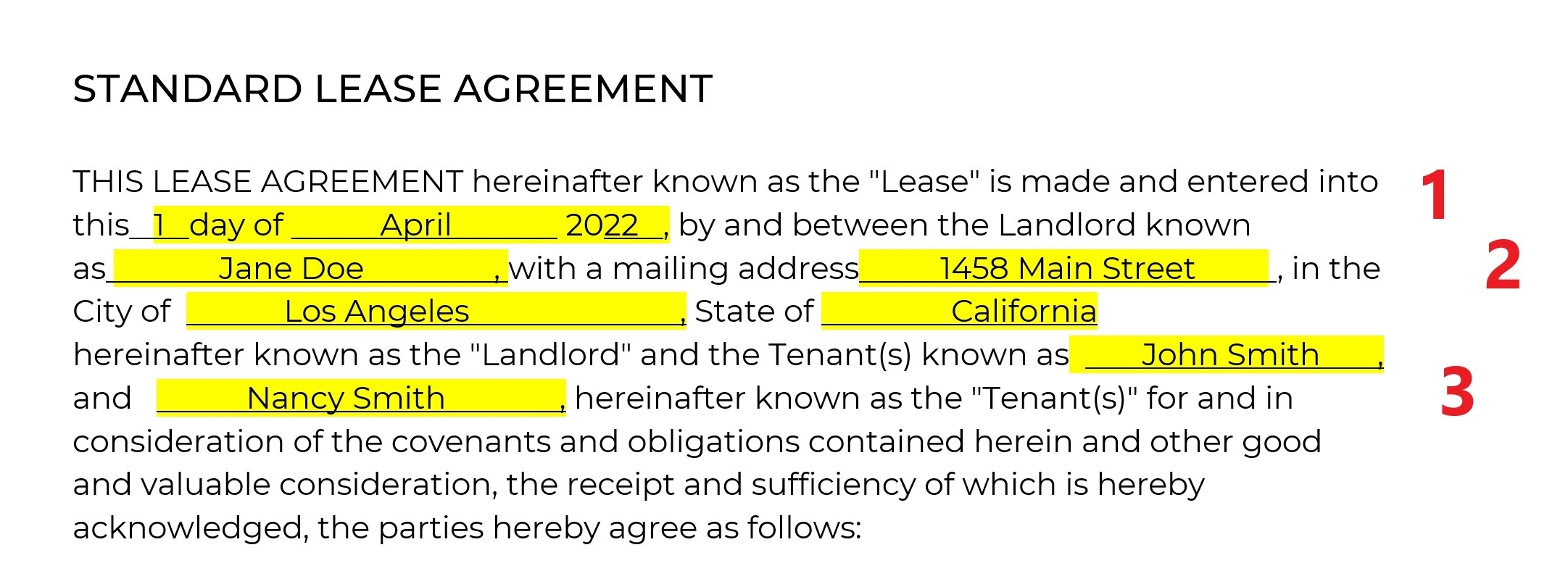You’re about to make a decision that could make or break your company’s future. No pressure, right?
Choosing a business location isn’t just about finding four walls and a roof. It’s about planting your flag in the soil of opportunity. It’s about staking your claim in the competitive landscape of 2024.
But here’s the brutal truth: Most entrepreneurs get this crucial step dead wrong. They focus on superficial factors, ignoring the invisible forces that truly determine whether a location will propel them to success or doom them to failure. To enhance your business’s visibility and attract customers in your chosen location, it’s essential to optimize your online presence effectively. One key resource is understanding how to manage your Google My Business location effectively. This guide offers a transparent, step-by-step approach to setting up your business profile, ensuring you capture local search visibility and engage with customers effectively. For more details, check out this comprehensive resource on how to manage your Google My Business location.
What if we told you that the perfect spot for your business exists, hidden in plain sight? A place where your target customers are practically begging for your products or services. A place where your overhead costs drop while your profits soar. A place that gives you an unfair advantage over your competition.
Sounds too good to be true? It’s not. But finding it requires a radically different approach than what most business owners use.
In the next few minutes, We’re going to reveal the five steps that separate location selection masters from amateurs. These aren’t just theories – they’re battle-tested strategies used by some of the most successful companies on the planet.
Are you ready to discover the secret weapon that could catapult your business light-years ahead of the competition?
Then let’s dive in. Your perfect business location is waiting.
Save 80% of delivery management time
We handle everything:
- Dedicated operations manager
- Real-time tracking dashboard
- Automated customer notifications
- Urgent issue resolution
Step 1: Define the Right Business Location Criteria
Pinpoint your customer base and market potential.
Ensure closeness to suppliers and partners.
Check for space, infrastructure, and zoning needs.
Survival Rates
Approximately 70% of new businesses survive beyond two years, but selecting the right retail location can significantly influence these odds.
Understand your business needs
Evaluate customer base and market potential
Start by figuring out who your main customers are going to be. You should know where they are located and how they prefer to shop. Look into market research reports and customer surveys to gather this information. An example of a useful resource is Esri’s Business Location Dataset, which provides insights into where businesses with similar customer bases are thriving. This can help you decide whether a particular area aligns with your market goals.
Customers Prioritize Proximity
Approximately 93% of consumers travel 20 minutes or less for everyday purchases, emphasizing the importance of location within this commuting window.
You also need to analyze the competition. Check for areas with a lower concentration of competitors. Less competition can increase your chances of securing a strong market position. Use location-based data to evaluate market demand and competition density.
Distance Varies by Purchase Type
Consumers are more likely to travel shorter distances for frequent purchases like gas (6 minutes) and groceries (8 minutes) than for less frequent purchases like clothing (19 minutes) and movies (17 minutes).
Assess proximity to suppliers and partners
Next, map out where your key suppliers and partners are. Proximity can lower transportation costs and improve supply chain efficiency. Make a list of your most essential suppliers and see if they are nearby or if logistics might become an issue. Factor in the accessibility of transportation networks to ensure smooth operations. This will help minimize delays and reduce shipping costs.
If you’re in the manufacturing or retail sector, being near distribution hubs or main thoroughfares can be crucial. This accessibility can enhance on-time delivery, cost-saving, and partnership fluidity. Consider how distance may impact your business connections or operational costs.
Consider space and local zoning ordinances
Identify necessary facilities and infrastructure
Determine the space you need for daily operations. Do you need a warehouse, a retail shop, or office space? Consider any special requirements for your equipment and inventory. Then, list any facilities essential to your operations, such as parking or storage. Create a checklist of features to look for when touring potential spaces.
You also need to assess the infrastructure. Does the area support high-speed internet if your business requires it? Check for availability of utilities: electricity, water, and HVAC. This checklist should guide your site visits to ensure potential locations meet all your specifications.
Understand local zoning laws and restrictions
Before you get too attached to a location, review the zoning regulations. Zoning laws control what kind of business can operate in a particular area. They decide if your business type is permitted and any restrictions you must follow. Make sure to consult with local zoning offices or review municipal websites to understand these regulations.
Remember, zoning can affect expansion opportunities in the future. Ensure you are not only compliant with current needs but also potential future growth. Check for any restrictions on signage or noise levels that could impact operations. This proactive approach will prevent legal barriers down the line.
Contextual Market Insights
Explore how your business location can impact marketing strategies. Note that location-based marketing is becoming more popular, with an expected growth rate of 18% from 2023 to 2028. Tapping into this growth can effectively increase engagement and personalize customer interactions. Therefore, the right location can be a powerful tool in your marketing arsenal.
Sales Growth from Location Data
An impressive 89% of marketers utilizing location data reported higher sales, demonstrating its effectiveness in driving revenue.
Marketing Spending Plans
About 60% of marketers plan to increase their spending on location-based marketing in 2024, reflecting its growing importance.
Step 2: Conduct a Location Analysis
Conducting a location analysis helps you understand demographic and economic factors.
Find out how competitive and business-friendly a location is.
Use specific tools to make data-driven decisions.
Research and analyze potential locations
Compare demographic data and economic conditions
Start with demographic data. This includes the age, gender, income, and education levels of people in a specific area. You’ll find insights about who lives in the area around your potential location. Use local government census data or tools like WIGeoLocation. This helps you visualize and predict market behavior.
Next, look into economic conditions. Research unemployment rates, average income, and business growth in the area. Look for economic reports from trusted sources like the local chamber of commerce. Economic vitality hints at a strong consumer base and more business opportunities. Place importance on recent trends to predict future growth.
Evaluate the local business environment and competition
Identify direct and indirect competitors in the area. Direct competitors offer the same products or services, while indirect ones satisfy the same customer needs differently. Use online review sites to check their customer feedback.
Next, understand the local business environment. Are businesses in the area expanding or closing? Visit local business centers or speak with municipal leaders. They might offer insights into government initiatives that support new businesses.
Use tools and resources for analysis
Leverage GIS mapping and data tools
GIS (Geographic Information System) tools help visualize and interpret location-based data. Tools like Maptive and Mapsted Analytics let you create demographic maps and identify ideal locations. These tools often include data visualization and predictive analytics which assist in forecasting potential business performance.
Location-Based Marketing Effectiveness
Approximately 78% of businesses using location-based data reported an increase in their customer base.
GIS tools help map out competition density, customer clusters, and geographic barriers. Look for features like heat maps that show customer density and drive time maps that calculate how long it takes customers to reach you.
Consult with commercial real estate experts
Real estate experts provide local market insights. They understand zoning laws, and market price trends, and have a network of potential locations. Find agents who specialize in your industry. They can compare property values and help with negotiations—insights that can be further enhanced using real estate scraping to analyze broader market data.
Databases like CoStar and LoopNet used by realtors are invaluable. These platforms can show trends in property availability and cost.
That’s your blueprint. This step gives you a solid foundation to evaluate all external factors impacting your choice of location.
Step 3: Evaluate Factors Affecting Business Location
-
Identify key industry factors: Accessibility and costs.
-
Monitor external factors: Regulations and community impact.
Identify critical factors for your industry
Accessibility to customers and employees
The ease of access to your business location can significantly impact performance. Stores, offices, or factories need to be easy for both customers and staff to reach. Look at public transport links, road networks, and even parking facilities. Customers who find it hard to reach you might opt for a competitor instead.
But it’s not only about getting there. Your location needs to be set where your market is. For a retail shop, you might need to be in a busy shopping district. For an industrial site, proximity to highways or rail yards might be vital.
Proximity vs. Price and Quality
Price and quality are equally valued by consumers when geographical location is not a determining factor, with 32% of respondents selecting each as a key consideration.
Experts often note the need for businesses to ensure ease of access, which means checking both digital accessibility (online presence) and physical accessibility (transport and mobility options). For further reading, the book “Location-Based Marketing for Dummies” explores how businesses can tailor their physical and digital presence to draw in the local market.
Online Influence
Around 70% of consumers will visit a store based on information found online, such as ads or reviews.
Costs and financial incentives
Cost is a tricky factor. Upfront costs like rent and purchase price are just the start. Look beyond at taxes, renovations, utilities, and potential financial incentives. Available data suggests that being aware of hidden costs can make or break a business budget.
Some regions offer tax breaks or financial incentives to attract businesses. These can offset other high costs. It’s critical to delve into local, state, and even federal programs that offer such benefits. A key source for practical info is the U.S. Small Business Administration’s site, which outlines current financial assistance programs for small businesses.
Understanding these elements might be complex, but resources like “Financial Intelligence for Entrepreneurs” give deep insights into managing these costs effectively.
Monitor external environmental factors
Assess local regulations and taxes
Regulations and taxation are often overlooked until too late. It’s essential to navigate local zoning regulations and potential business licenses needed. Specific industries might face extra rules about what can be done based on location. Not being compliant can result in fines or business closure, making it vital to check local government resources for up-to-date guidelines and compliance requirements.
Zoning laws can vary widely, and their impact on your ability to conduct business can’t be understated. When considering manufacturing facilities, check restrictions on emissions, waste disposal, and noise. “Zoning Rules! The Economics of Land Use Regulation” by William A. Fischel is a comprehensive guide to understanding these regulations.
Understand community impact and support
The community around your business can be both a support system and a challenging factor. A supportive community can mean good word-of-mouth referrals and local customer base growth. Communities often have economic development councils focused on aiding businesses to thrive.
Consider the health of the business environment in the area. This includes the presence of thriving businesses, which could mean a healthy, growing community. However, it’s crucial to be aware of potential negatives, such as local opposition to new businesses or existing negative perceptions. Look into reports or contact local business centers for insights into community attitudes.
One popular strategy is embedding a business in local events or community activities, a strategy detailed in “The Small Business Bible” by Steven D. Strauss. This tactic can increase local awareness and support for a business’s products or services.
Understanding these crucial aspects provides a robust framework for selecting the right business location. Whether expanding, relocating, or starting anew, making informed decisions ensures long-term growth and sustainability.
Step 4: Engage in the Site Selection Process
Visit potential sites for on-the-ground insights.
Engage stakeholders to balance costs and benefits.
Make data-driven decisions with informed discussions.
Shortlist and visit potential sites
Schedule visits to evaluate physical conditions
Start with a list of promising locations. Go beyond just browsing online photos. The physical condition of each site matters. Check for structural soundness. Look at wear and tear. Inspect the roof, walls, and flooring. Look at HVAC systems. These checks help avoid costly repairs later. Bring a checklist to ensure a thorough inspection. Consider hiring a building inspector for detailed insights.
Study the surrounding area for amenities and transport links
When you visit, look at more than the building itself. Check the surrounding area. Evaluate transport options and traffic patterns. Look at public transit availability. Examine parking facilities. Check nearby amenities. Consider banks, restaurants, and supply stores. Look out for competitors in the area too. This will help gauge customer footfall.
Involve stakeholders in decision-making
Collect feedback from partners and team members
Bring your stakeholders into this process. This includes business partners and key team members. Arrange walkthroughs with them during site visits. Ask for their opinions. Get feedback on the layout and location. Consider their concerns. Take note of their suggestions. This collective insight is valuable for a balanced decision.
Balance cost with benefits in the final decision
After visits and feedback collection, weigh the costs against the benefits. Consider both immediate and long-term costs. Look at rent or purchase price. Consider property taxes and operational costs. Factor in renovation expenses. Balance these with expected benefits. Evaluate the potential for customer acquisition, ease of access for suppliers, and employee convenience. Don’t forget external factors like market trends.
To help ensure data-driven decisions, remember that resource shortages have been affecting timelines and project viability. Also, take into account current economic conditions, which might affect industrial site availability.
Proceed with caution and clarity. This step sets the foundation for what comes next in setting up your business location.
Step 5: Manage Business Location Setup
An efficient setup ensures smooth opening and operations.
Avoid delays by meticulous planning and legal compliance.
Secure agreements to prevent future disputes.
Plan logistics and setup operations
Setting up your new business location needs meticulous planning. It involves coordinating with various utilities and securing all the necessary permits.
Coordinate with utilities and service providers
To start, compile a list of essential utilities needed for your business. This often includes electricity, water, gas, internet, and possibly waste management. Next, contact these utility companies well before your planned opening date. Schedule the necessary installations or service transfers. Make sure to verify service availability in the area to avoid last-minute hiccups.
Alongside utilities, identify other service providers like security systems, cleaning services, or IT support that are vital for daily operations. Schedule meetings to discuss individual requirements. Keep a detailed record of each provider’s contact information, service terms, and start dates.
Set up necessary permits and licenses
Begin by identifying which permits and licenses are specifically required for your industry and location. This could include business licenses, health permits, fire department clearance, and signage permits, among others.
Visit the local government office or their website to learn about application processes and fees. In some cases, several permits might be needed, so organize them by priority. Submit each application as early as practicable, considering the time it might take for approvals.
Allocate a timeline to follow up on these applications. Often, delays are due to slow processing, so regular checks can help move things along. Having these ready ensures legal compliance and avoids potential fines or operational disruptions.
Finalize contracts and secure agreements
The foundation of a good business setup lies in securing strong contracts and agreements. This ensures a clear understanding between parties and prevents misunderstandings or disputes later.
Negotiate lease or purchase agreements
If you’re leasing, review the lease agreement thoroughly. Pay attention to crucial lease terms such as rent, duration, renewal options, and responsibilities for repairs. If purchasing, ensure a comprehensive understanding of purchase terms and conditions.
It’s wise to negotiate terms that align with your business needs. For instance, if possible, negotiate for tenant improvements or maintenance responsibilities. Consider engaging a real estate lawyer to advise on terms that could have legal or financial implications.
After negotiations, get everything in writing. Documentation reduces the risk of disputes and serves as a clear reference for both parties.

Ensure compliance with legal and financial terms
Review all legal documents to confirm compliance with the terms discussed. Look out for clauses related to tenant obligations, notice periods, or financial penalties. Ensure that any special conditions are legally documented.
Likewise, verify financial commitments such as deposits or mortgage terms align with business budgets. Cross-check any taxation obligations associated with the property. Meeting these requirements helps in smooth financial planning and avoids legal issues.
Hire legal or financial advisors if economic or legal implications are complex. Their expertise can safeguard against hidden challenges.
Securing a business location involves more than just picking a spot. It’s about proper setup and legal compliance to ensure smooth operations. Follow these steps to cover all bases when managing your business location. Once these logistics are in place, you’re ready to delve into advanced tips for optimizing your location setup.
Advanced Tips for Navigating Your Business Location Strategy
Get creative with temporary or shared spaces for complex situations.
Steer clear of locations lacking growth potential.
Vigilantly check for hidden fees in contracts.
Alternative approaches for complex needs
Explore temporary leasing options or shared spaces
In today’s dynamic market, flexibility is key. Temporary leasing or shared spaces can offer agility for businesses uncertain about their long-term spatial needs. These options provide two primary benefits: cost-efficiency and adaptability. Shared spaces or co-working environments, like those offered by WeWork or Regus, cater to businesses that value networking and collaborative atmospheres without the commitment of a permanent lease. For startups or expanding businesses, these environments can be a testing ground before committing to a full lease.
However, while these options are appealing, they may also come with potential downsides, such as limited customization and the risk of distractions in a shared environment. Renting a temporary space can leave you at the mercy of fluctuating rental prices as opposed to a fixed long-term lease. Businesses must weigh these aspects carefully before opting for non-traditional spaces. Those interested in learning more could examine case studies or business journals that have evaluated these flexible workspace solutions for deeper insights.
Lease-to-buy strategies for long-term expansion
Lease-to-buy agreements can be a strategic choice for businesses eyeing expansion. This method allows companies to lease a space with the option to purchase, often using lease payments towards the property purchase price. This strategy is particularly advantageous in markets with rising property values, where buying later could mean paying significantly more.
On the flip side, these agreements tie up capital that might be used elsewhere in the business, and there’s always the risk the business might not reach the growth it anticipates in time to buy. Fluctuations in economic conditions can also turn a smart plan into a financial strain. Developers and realtors offer insights into these arrangements, and books on real estate investing can provide further depth, illustrating both the opportunities and risks involved.
Common pitfalls and how to avoid them
Avoid locations without growth opportunities
Business locations need to support growth. Selecting a site in an area lacking economic expansion or demographic vibrancy can stall business progress. It’s crucial to look beyond the immediate future and consider if the location will remain attractive five or ten years down the road.
Identifying growth opportunities requires a thorough analysis of regional economic trends, housing developments, job growth forecasts, and infrastructure projects. Publications like business journals or regional development reports provide valuable forward-looking insights. However, take caution by cross-referencing multiple sources to ensure the data reflects emerging trends accurately.
Thoroughly check for hidden costs in agreements
Hidden costs are notorious for derailing business budgets. From maintenance fees to unexpected property taxes, these can severely impact profitability. A careful review of lease or purchase agreements is essential. Businesses should look for clauses regarding maintenance, repair costs, and utilities. Lease agreements often have terms that can affect long-term costs significantly.
Enlisting the help of a legal advisor to review agreements can offer peace of mind. Legal professionals can spot deceptive terms that might escape the average business owner’s notice. Jack Welch’s advice is apt here: blending immediate-term commitments with long-term strategy leads to success.
Evaluating hidden opportunities
Demand for development-ready industrial sites
Industrial sites are in high demand as infrastructure investments surge. This presents golden opportunities for businesses in growth industries like manufacturing or technology. Choosing a location well-supported by infrastructure reduces additional spending on setting up utilities and eases logistics. Understanding this trend and how it aligns with long-term business growth could enhance the competitive edge. Research reports and industry analysis offer insights on industrial site trends that savvy business owners might explore further.
Each of these tips informs smarter decisions when navigating complex location challenges. This nuanced understanding empowers businesses to choose locations that both meet immediate needs and support sustainable growth.
Troubleshooting Common Issues for Your Business’s Success
Avoid zoning surprises with expert help.
Control high costs by smart budgeting.
Practical steps to solve common problems.
Solutions to Potential Problems
Address Unexpected Zoning Conflicts
Understand Your Zoning Ordinance: Before tackling any zoning problems, get ahold of the zoning ordinance for your area. Read through to catch important details about what your location is allowed to do. This helps spot any potential conflicts early. These documents list what kind of business activities are permitted in specific zones and have guidelines about things like building size and parking.
Consult with a Zoning Expert: If you face a zoning issue, talk to a zoning attorney or a real estate consultant specializing in zoning. They can help you understand local laws and find a practical solution. Bringing in an expert early can save time and avoid legal issues.
Use Alternative Dispute Resolution: Instead of going to court, try methods like mediation or arbitration. These are faster and less expensive. Mediation involves a neutral third party helping you and the local authority settle. Arbitration is a bit more formal, like a court setting, and the arbitrator’s decision is usually binding.
Negotiate with Local Authorities: Engage directly with local authorities to discuss the conflict. Be ready to explain your business needs. Consider suggesting minor adjustments to your plans to meet compliance, which can often be agreed upon without drastic changes.
Mitigate the Impact of High Operational Costs with Budgeting
Conduct a Cost Analysis: Start by listing all potential expenses for the location, such as rent, utilities, taxes, and salaries. Break these down into fixed and variable costs to understand where your money will go.
Create a Detailed Budget: Develop a budget that prioritizes essential costs. Include a contingency fund for unpredictable expenses. This will help you manage your finances better and avoid overspending.
Identify Cost-Cutting Opportunities: Look for areas to save money without harming business operations. For instance, negotiate better terms with suppliers or consider remote work to reduce space needs. Use energy-efficient practices to save on utility bills.
Leverage Financial Incentives: Investigate local financial incentives. Many areas offer tax breaks or grants to businesses that are set up in their region. These can significantly ease operational costs. Consult with local economic development agencies for available options.
Implement Technology Solutions: Use technology to streamline operations. Invest in software that improves efficiency or cuts unnecessary labor costs. This could mean using automated systems for inventory management or customer service.
By addressing zoning issues and controlling operational costs, you can set your business location for success without unexpected setbacks. Being proactive and prepared with expert guidance and effective budgeting strategies ensures smoother operations.
Further Resources and Reading
Industry reports offer insights into local business trends.
Strategic location choices can drive customer satisfaction.
Books and journals provide foundational understanding.
Related topics or advanced guides
Explore regional business trend reports
Stay ahead with local business trends by diving into industry-specific publications. This includes reports from chambers of commerce and economic development organizations. They offer detailed analyses of regional shifts that influence business potential. Understanding these can help align your location strategy with emerging demands. State agencies often publish updates on infrastructure projects, which may hint at future growth zones. For instance, changes in transportation networks or government incentives could enhance business accessibility or lower operational costs.
Business journals focusing on real estate
Real estate journals are treasure troves for those seeking a comprehensive understanding of market dynamics. Publications like the Journal of Real Estate Economics provide statistical analyses and case studies on property trends. They explore the interplay between real estate cycles and economic factors. Such insights are crucial for making informed decisions about property purchases or leases. Journals often discuss advanced topics like the impact of interest rates on property values, equipping you with knowledge to anticipate market shifts. Subscriptions to these journals can keep professionals informed about the real estate market’s intricacies.
Why Business Location Matters
Understand the impact on sales and brand visibility
Choosing the right location can significantly elevate your business in more ways than one. A high-traffic area often equates to more potential customers, thereby increasing sales opportunities. Visibility is key for brand recognition; strategic positioning can lead to enhanced customer engagement and loyalty. An accessible location invites higher foot traffic, and increased visibility can reduce marketing costs, as the site itself can become a prime promotional tool. Recognizing the connection between location and consumer behavior is fundamental in strategic planning.
Long-term effects on housing costs and employee satisfaction
Business location isn’t just about the bottom line; employee well-being is also at stake. Proximity to affordable housing can influence employee satisfaction and retention. High housing costs near your business location may deter talent or demand higher wages. Location affects commute times, which directly impacts work-life balance. Research has found that shorter commutes increase job satisfaction. This ensures your chosen location supports both your business goals and employee contentment.
Books for deeper insights
For those hungry for deep dives into business location strategy, certain books offer valuable perspectives. “Location is (Still) Everything: The Surprising Influence of the Real World on How We Search, Shop, and Sell in the Virtual One” by David R. Bell is a recommended read. It delves into how physical location impacts online and offline behaviors. Another essential title is “Why Geography Matters” by Harm de Blij, which breaks down how geographic factors drive economic and business decisions. These books blend theory with practical insights, making them great resources for anyone tasked with choosing a business location.
Conclusion
Choosing the right new business location is a journey that shapes your company’s future. By following these five steps, you’ve gained the tools to make an informed decision that aligns with your vision. Remember, the perfect location balances your business needs, market potential, and operational efficiency.
As you consider state and local taxes and your target market, it’s important to stay open to opportunities that support a prosperous economic environment. Look at how your chosen location compares to other businesses in the area and the surrounding retail business landscape. Your decision should also align with the needs of small business owners, taking into account future growth prospects.
The location for your business is more than just an address—it’s the foundation of your business growth and success. As a business owner, take time to revisit your criteria, analyze your options thoroughly, and involve key stakeholders, including other business owners, in the process. With careful planning and consideration, you’ll find a location that not only meets your current needs but also supports your long-term goals. The journey doesn’t end here; it’s just the beginning of your business’s exciting new chapter. Are you ready to take the next step and turn your ideal location for your business into your business reality?













